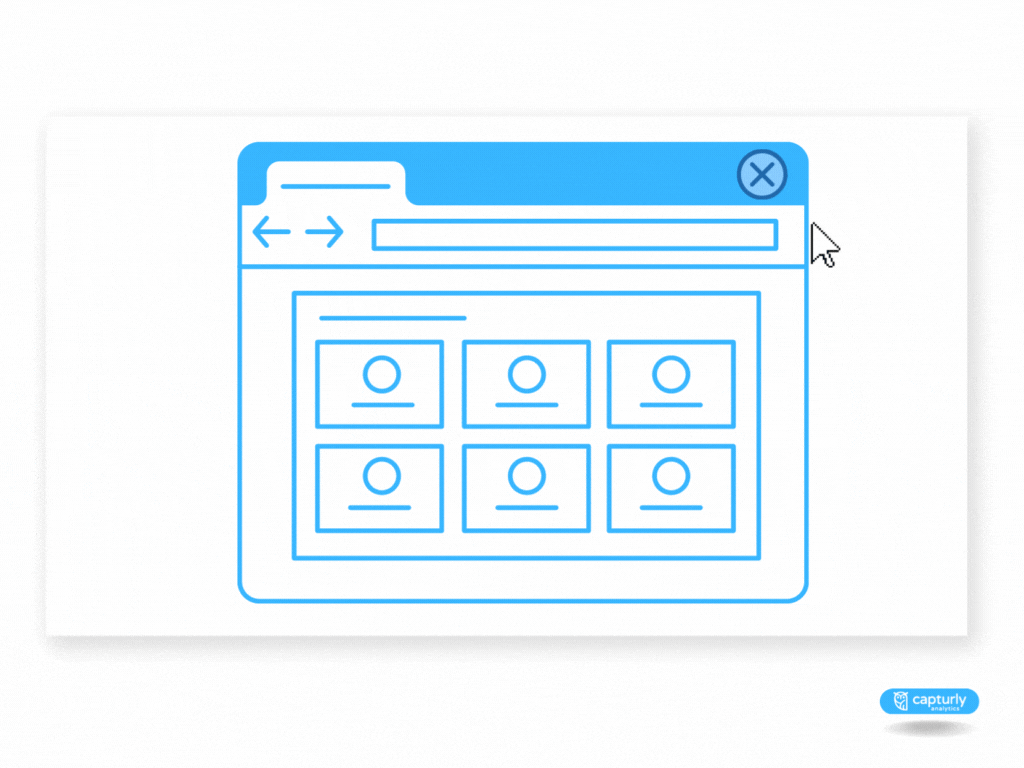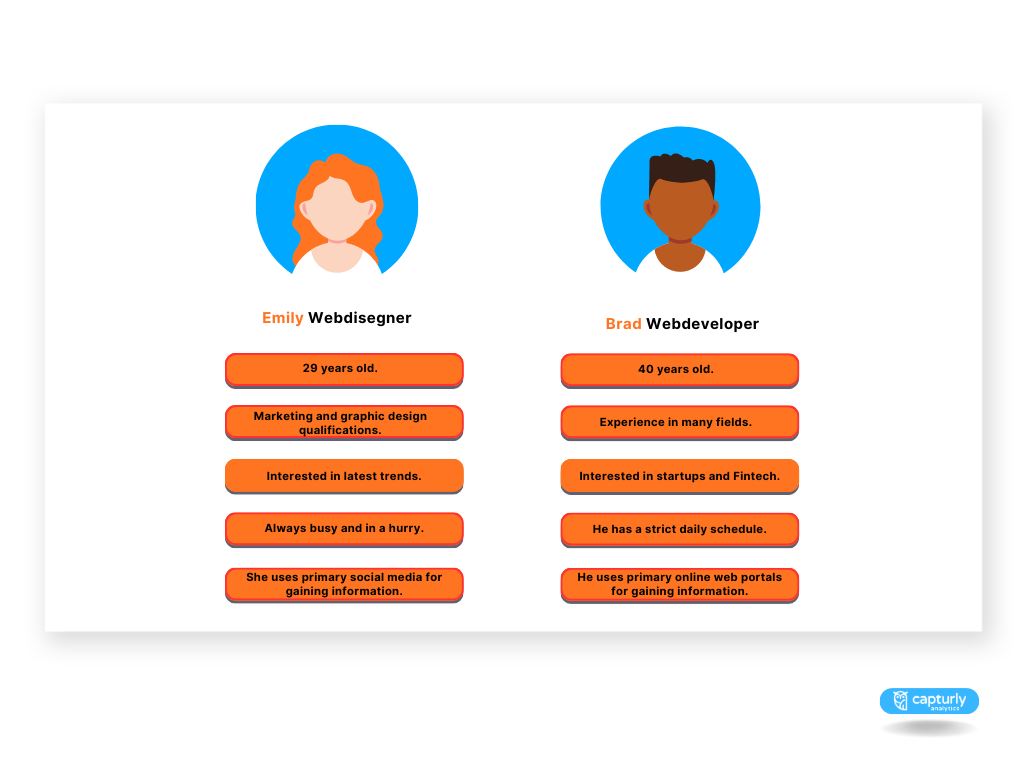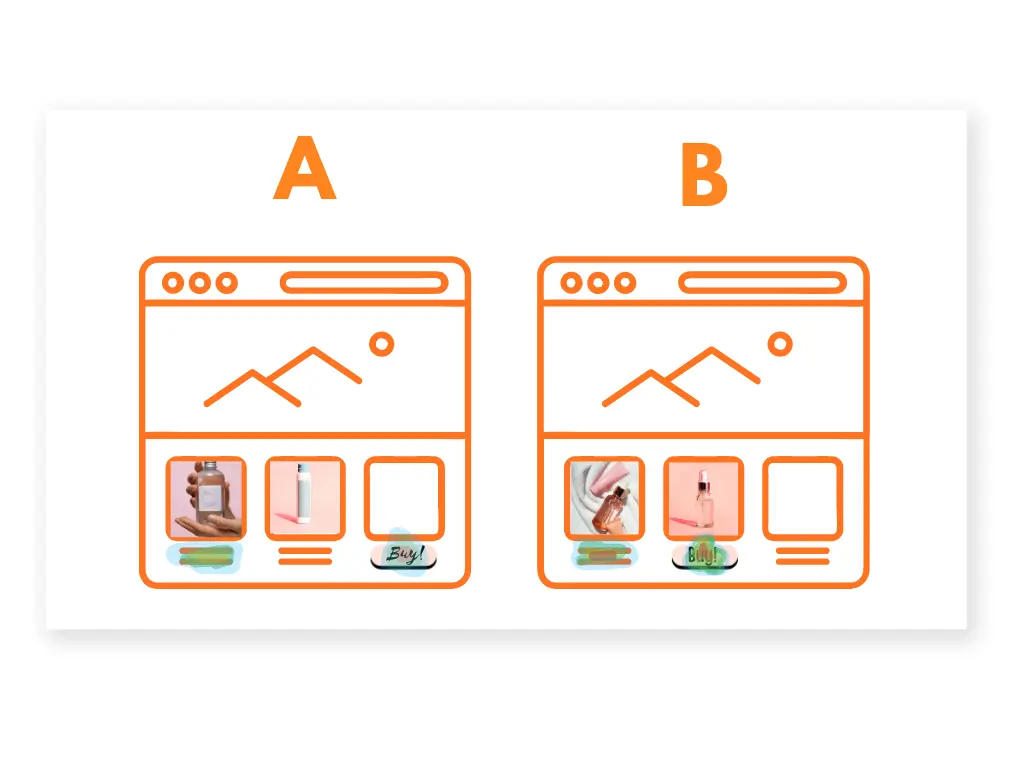Are you concerned about making your product user-friendly and meeting the needs of your target audience? If so, pay close attention because this is where UX data comes into play.
UX data holds immense significance in product development as it provides valuable insights into how users interact with your product or service. These insights enable you to determine the necessary improvements to enhance the user experience. Sounds promising, doesn’t it?
In this article, we will delve into the topic of UX data, personas, and proven UX research methods, and offer some useful tips.
Table of Contents
What is UX data?
First, let’s begin by addressing the question: What exactly is UX data?
UX, short for user experience, encompasses the information and feedback gathered regarding how users interact with your product or service. Acquiring this knowledge is crucial for successful product release and development.
Through the collection of UX data, you can identify areas of concern or points where users may encounter difficulties. This data provides valuable insights into user behavior, preferences, and pain points, allowing the product team to make informed decisions and deliver a user-centric experience.
For instance, consider an e-commerce website where users frequently abandon their shopping carts. By analyzing the UX data, you can uncover the reasons behind this behavior. In this case, it could be attributed to a complicated payment process or excessively high shipping costs. Armed with this valuable information, you can then make necessary adjustments to the website to address these issues and enhance the overall user experience.

By taking UX data into account, you can prevent anyone from leaving your website just because they’ve encountered problems or usability issues.
Benefits of utilizing UX data
Not only does UX data help you create a better product, but it can also save you time and resources by ensuring your team focuses on the most important improvements that will have the biggest impact on the user experience.
By understanding user behavior, you can identify what users like and dislike about your product and use this information to make improvements that make it more intuitive, efficient, and satisfying for your users.
From the data, you can determine which features are used the most and which are ignored. This allows you to focus on developing features that will have the greatest impact on users.
Also, an important benefit of UX data is that it can help you make well-informed decisions about your product roadmap.
Do you want to know what is a product roadmap?
A product roadmap serves as a communication tool that aligns stakeholders, including product managers, development teams, executives, and other key stakeholders, on the overall product strategy and its planned evolution over time.
So this data draws your attention to which areas of the product should be dealt with the most and prioritizes development preparations based on this.
But before researching UX data, it is important to know who your users are. Because in some cases, UX data adjustments are made for their benefit to meet their specific needs. The right way to do this is to create a buyer persona! And let’s check how to start!
Creating buyer personas
User personas are fictional representations of ideal users and are a key tool in creating user-centered designs.
Using user personas to guide product development decisions is essential to creating a user-centric product that truly resonates with your target audience. By keeping your users’ needs and goals in mind, you can make informed decisions about product features, updates, and improvements. You can also use personas to test new designs and features, ensuring they meet the needs of your target audience.
User personas help you understand your users’ needs, goals, and pain points, allowing you to design a product that meets those needs. They also help you empathize with your users, making it easier to make design decisions that serve their best interests.

To create accurate user personas, you need to conduct user research and collect data about your target audience. This can be done using surveys, interviews, and other research methods.
The effective use of research techniques requires us to be aware of our users. For this, personas and empathy maps are essential, with the help of which we can better understand who your main users are and what their needs are, and what is important for them. When we already have this information, it is possible to perform various tests.
Once you’ve collected this data, you can use it to create personas that accurately reflect your users’ needs and behaviors.
What UX research methods are essential to know?
When it comes to collecting UX data, there are many different methods you can use. The most common methods of collecting UX data include surveys, interviews, usability testing, A/B testing, prototyping, and analytics tools.
What are the characteristics of these research methods?
UX research methods help you gain insight into users’ behaviors, needs, and motivations but how exactly?
By collecting UX data, you can identify pain points and areas where users are struggling or frustrated. This helps you make informed decisions about the design and functionality of your product. This way, you can create a user-centered design that meets the needs and expectations of your target audience.
For example, a survey, interview, focus group, usability testing, analytics, and many other methods can help you with this.
Surveys
You can use surveys to collect feedback on what users think about your product and how they use it. Such a survey is a perfect way to get a comprehensive picture of your users’ needs.
You can use surveys to ask users about their preferences, their experience using the product, and their overall satisfaction with the product. By implementing what you have found out you can iteratively refine their product based on user input, enhancing the overall user experience and increasing the chances of a successful product release.
Interviews
In this method, UX researchers interact with users one by one, usually working with 6–12 users to discuss how the product works. The interviews can take place in person, over the phone, via e-mail, via chat, or even in the form of guerilla tests.

However, effective interviews require considerable experience in order to gather truly useful data. The goal of researchers is to find out what feelings users have about products and services. It is important to select these users properly based on a thorough knowledge of personas.
What’s more, if you decide on one of the forms of the interview, you can gain deeper insight into a specific topic and receive more detailed feedback.
Focus groups
A focus group is a qualitative research method that aims to study the opinions and experiences of group members. It is usually used for market research or product development purposes.
It gives you the opportunity to observe the interactions and differences of opinion between group members and thus gain a deeper insight into the needs and expectations related to the use of the product or service.

We can get an answer to that:
- How do users perceive the product?
- What are the most important features of the product, according to users?
- What problems have you experienced with the product?
Usability testing
You can also conduct usability tests to see how your users interact with your product in real time, which can help identify pain points and areas for improvement.
User experience testing can be approached from several perspectives:
- How useful the technology is for users
- How easily they can complete a task
- How user-friendly the product is for them
Nowadays, it is already a basic expectation that the use of products does not cause difficulties for users. The main goal is to make the tasks as simple and less tiring as possible.
A/B testing
In A/B testing, you compare two versions to find out which version is better in terms of the user experience. For example, you can test two different designs or text content.
It’s a powerful tool for improving the user experience and shows you which changes lead to higher conversion rates, longer time spent by users, or lower bounce rates on your website or app.
During A/B testing, the original version (version A) and the test version (version B) are divided into two randomly selected groups. The two groups see different versions and the results are compared. During A/B testing, changes are usually made only to one element at a time, such as button text, color, image size, etc.

The advantage of A/B testing is that, based on the data, it is possible to determine which version is best in terms of achieving specific goals. A/B testing is an ongoing process that allows designers and developers to continually refine and improve their app or website, ultimately leading to better results.
Prototypes
Prototypes are preliminary versions or models you can make of a product early in the design process. These can be static screen designs or interactive models that allow users to experience the interactions of the application or product.
Prototypes enable an iterative design process where prototypes can be continuously developed and refined based on feedback and testing. In addition, they help communicate across teams to discuss ideas and develop a shared vision.
They help identify problems and opportunities that occur during product development, thus promoting more efficient product development and a better user experience.
Analysis of existing data
Analytical data, such as that offered by tools like Capturly, can be incredibly useful. These analytics tools allow you to monitor user behavior, track the time spent on specific pages, and identify the actions taken. Such insights show how users interact with the product and pinpoint the areas where they face difficulties.
Comprehending user needs and pain points is crucial for the successful development of any product. By recognizing these pain points, you can specifically target and address areas where users encounter difficulties. This, in turn, enhances the user experience and leads to a more user-friendly product.
Once you’ve gathered your user research data, it’s time to delve deep into analysis. Identify patterns and trends within the data, prioritizing areas of significant struggle for users. Armed with this information, you’ll be empowered to make informed decisions regarding product features, updates, and enhancements.
Here are some TIPS for user testing!
There are some small steps that can help you further improve your usability testing.
Show your ideas to people as soon as possible!
Even if you only have sketchy ideas, it’s worth coming up with them and asking the stakeholders if they understand the planned process. It is important to find out if the presented process is similar to solutions used on other websites and if it is easy to use.
Analyzing the feedback you receive in this way can help you become clearer about where you need to go during the implementation so that the user experience is as good as possible.
It is not worth telling the test subjects what to do!
If you tell your test subjects how to use your product, it will be difficult to assess how easy it is to use. However, you can’t give them a completely free hand either, as a task can provide a clue to use. But then let users decide for themselves how to complete the task. It is worth paying attention to the speed at which the task is completed because it shows how good the user experience is.
If your users don’t act the way you envisioned, don’t try to fix them; instead, look at why they decided the way they did.
Pay attention to what they say, not just how they act!
During personal tests, you can not only observe how users use your product but also hear what they say in the process. You should ask questions that help you determine how well the users understand the presented interface.
For example, “Can you find important buttons and information?” “Do they see buttons as buttons, or do they confuse them with other elements?”
If the test subjects encounter difficulties, you should note the problems and then improve the product in response to this feedback during the design process.
Now that you know how to collect UX data, it’s important to know how to analyze it!
Analyzing UX data can help you identify patterns, trends, and areas for improvement to help you make data-driven decisions about your product. Various analytical techniques can be used to analyze UX data.
The most common techniques include:

Descriptive analysis: This involves summarizing data to identify patterns and trends. For example, you can use descriptive analytics to determine which pages of your website users spend the most time on.
Comparative analysis: This involves comparing data from different sources to identify similarities and differences. For example, you can compare user behaviors on a website and a mobile app.
Correlation analysis: This involves identifying relationships between different variables. For example, you can use correlation analysis to determine if there is a relationship between the time of day and user engagement with your product.
After analyzing UX data, it is important to interpret the results to make data-driven decisions. This involves identifying areas where users are struggling or experiencing pain points and then improving the product to address the issues.
For example, if analytics tools show that users are spending a lot of time on a certain page but not taking any action, this could indicate that the page is confusing or unclear. Using usability testing, you can identify specific problems with the site and then make improvements to make it more user-friendly.
Conclusion
It’s important to prioritize the collection and analysis of UX data during your product development process, as it can help your business stay competitive and meet the changing needs of your users.
With continuous data collection, businesses can identify trends and patterns in user behavior and make updates to their products that better meet user needs. This can ultimately lead to increased user satisfaction and retention, as well as better business results.
The continuous collection and analysis of UX data is essential for the continued success of the product. I would encourage your business to prioritize UX data in your product development processes and use various methods to collect comprehensive data about your users. This allows you to create a more user-friendly product that better meets the needs of your users.
Don't forget, sharing is caring! :)

